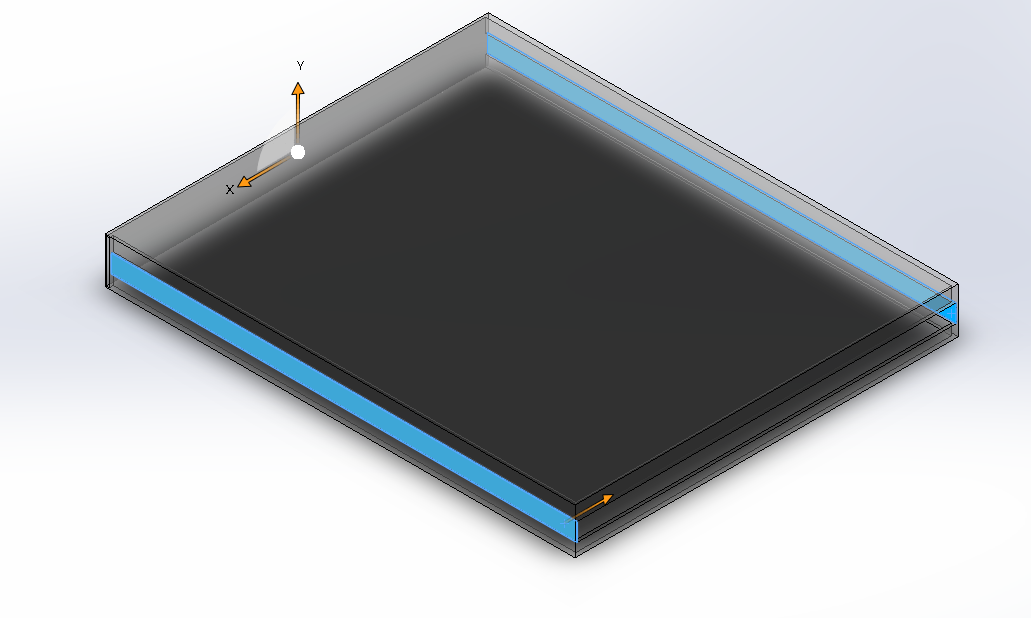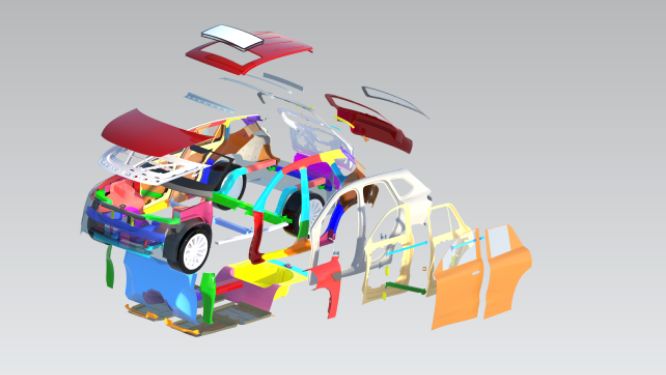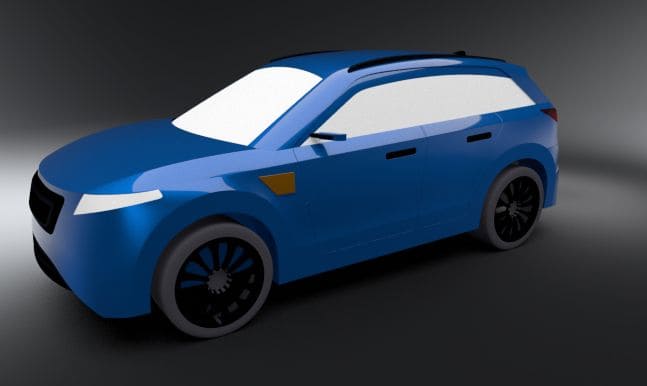Courses by Software
Courses by Semester
Courses by Domain
Tool-focused Courses
Machine learning
POPULAR COURSES
Success Stories
Battery sizing and designing a modular structure of an 18 kWh HEV battery pack.
AIM: Battery sizing and designing a modular structure of an 18 kWh HEV battery pack. CELL SPECIFICATIONS: Battery cell: Lithium iron phosphate (LiFePO4) based on nano phosphate technology by LithiumWerks. Voltage (nominal): 3.3 V Capacity (25 ºC): 2.6 Ah (2.5 Ah) – we will select the minimum capacity…
Swapnil Kanvinde
updated on 31 Oct 2020
AIM: Battery sizing and designing a modular structure of an 18 kWh HEV battery pack.
CELL SPECIFICATIONS:
Battery cell: Lithium iron phosphate (LiFePO4) based on nano phosphate technology by LithiumWerks.
Voltage (nominal): 3.3 V
Capacity (25 ºC): 2.6 Ah (2.5 Ah) – we will select the minimum capacity for our design for a higher loss allowance.
Current (1C): 2.5A
Current (pulse-10s): 120A
Current (continuous discharge): 50A
Diameter: 26 mm (25.96 +/- 0.5 mm)
Length: 65.15 (+/- 0.5 mm)
Mass: 76 g (+/- 1 g)
Link to cell datasheet: ANR26650M1-B
BASICS AND FORMULA:
Cell:

A cell is a part of a battery where actual electrical energy is stored. Battery cells are of different chemistry, size, shape, and specification.
Type of chemistry: Lithium-ion, Nickel Metal Hydride, Nickel Cadmium, Lead Acid, etc
Cell type: Cylinder, pouch, prismatic, etc
Cell size: A standard cylinder cell has dimensions of 26650(26 mm dia and 65 mm height), 18650(18mm dia and 65 mm height), etc
Cell specification: Based on the above 3 components, the chemistry, size, and type a cell can have different voltage and energy capacity usually specified in Ah
Module:

A module consists of several cells connected in series and parallel. Depending on the number of modules required and battery size requirements a module is designed. If we connect all the series and parallels in one connection the balancing of all cells will be very complex and require a costly battery management system (BMS). The single connections will also restrict the design flexibility, create cooling issues, and dimension issues. An increase in instability or imbalance between a single connection will affect the battery performance and cells and can increase the age of weaker cells quickly. To prevent this the battery cells are connected in series and parallel in small modules.
Battery pack:

A battery pack consists of cells connected and made into modules, and modules connected into series and parallel connections to suffice the overall load requirements. A battery is considered as one huge cell with high voltage and capacity when charging or discharging.
Series connection:

The voltage of each cell in series is added but the current flowing through each cell remains constant. Series connections are used to increase the overall voltage of the battery pack. Nowadays high voltage battery is becoming a trend in for Automobile applications.
Parallel connection:

In parallel connection voltage through each cell remains constant while the current through the cells in parallel is summed. Parallel connections are used to increase the capacity/energy of the battery.
Energy: The energy of a battery pack is defined as the maximum amount of work that can be done from a battery cell/pack. The energy of a battery cell/pack is standardized per hour basis. Units of energy are Wh.
Energy = Capacity * Time
Where,
Capacity is in Amp.hours (Ah)
Time is in hours (h)
Power: Power is the amount of energy supplied or discharged per unit time. The power of a cell/pack is standardized on a per hour basis. The units of electrical power of a battery is W. Power for a battery pack is different from mechanical power.
Power = Voltage * Current * Time
Power = Voltage * Capacity
Where,
Voltage is in Volts (V)
Current is in Amperes (A)
Time is in hours (h)
Capacity is in (Ah)
BATTERY SIZING:
As per current market trends, batteries for HEV’s are designed at 300 V
For the sizing of voltage, we must connect the cells in series.
Number of cells in series = Voltage required / Voltage per cell
Number of cells in series = = cells
For designing an optimized module, we need to divide the total number of cells in series and hence we will select 92 cells so that the series modules can be divided into 4 modules. The module sizing will be discussed ahead. Connecting 92 cells in series will give the required voltage (300V) and the capacity of one series connection will be 2.5Ah (cells connected in series will have the lowest capacity of all the cells). To increase the capacity of the system and obtain the required power output of 18 kWh we should further connect the cells in parallel connections.
Required capacity = Power required / Voltage of battery pack = =
Number of cells in parallel = Required Capacity/capacity per cell = = 24 cells
From the above two calculations,
Number of cells in series = 92 cells
Number of cells in parallel = 25 cells
Module sizing:
To overcome the battery sizing issues due to a single connection and flexibility in sizing the battery pack is divided into 4 modules.
Number of cells in series per module = 23 cells
Number of cells in parallel per module = 24 cells
The voltage of each module = 79.2 V
The capacity of each module = 60 Ah
By using the above specifications for each module, we will need 4 such modules in series and 1 module in parallel.
Battery pack specification = 24p92s
Module specification = 1p4s
CAD DESIGN:
Cell:
Cell top (Blue surface represents the positive side)

In the above view, the height of the cell is 65 mm and the diameter is 26 mm. The red surface is insulated and it keeps all the interior parts of cells in place. Inside this cylindrical part, there is a cell anode, cathode, electrolyte, separator, current collector, etc. The blue area in this geometry represents a positive side connection.
Cell bottom (Green surface represents the negative side)

The green area in the above geometry of a cell represents a negative side connection.
Casing (module):


The above casing as shown above in the zoomed image has slots engraved in it to connect bus bars that connect the batteries in series and parallel. The slots cut in the body of cells are used to accommodate the bus bars. The slots extruded on the end of the inner surface of each casing helps to keep each cell in place and prevent the cell from falling out of the casing. The honeycomb design is used to optimize the battery size and make a compact module for a battery. The above casing represents a module with 23 cells in series and 24 cells in parallel.
Lid (module):

Similar to the casing the top lid also has slots in it for a bus bar to pass and connect the other side of the cell in series or parallel. In our design, the bus bar is used to connect the cells in parallel and then the parallel cells are connected in series. Depending on the priority of capacity or power requirement the cell is designed into modules of parallel cells connected in series or series cells connected in parallel. The top lid helps to keep the cells in place on the other end of the casing and the lid is attached to the casing easily with the help of fixtures. When opening a module the lid is opened easily by removing the fixture and working on the cells for replacing the damaged cell or repairing the failed connections. The above lid represents 23 cells connected in series and 24 cells in parallel which will exactly fit the casing and represent 1 complete module.
The frame (module):


The frame holds the modules (Cells assembled in casing and lid and connected in parallel and series and BMS. The casing in our design has two slots in it represented in blue. The modules will have sliders attached to it which can move freely in the forward or backward direction inside the frame. To work on a module the modules can be easily slid out of the frame and slide in once the work is done. This design helps to easily assemble and disassemble a cell module from the battery frame. The frame in our design is made semi-transparent to show its complete geometry. The frame which is shown above can hold and protect one module and BMS and has a capacity of a single module with 23 cells in series and 24 cells in parallel.
Battery pack 1p4s modules:


The above geometry shows a complete battery pack which has 92 cells in series and 24 cells in parallel. The battery pack is divided into 4 modules each consisting of 23 cells in series and 24 in parallel. The cells are first assembled in parallel lines of honeycomb design as shown in the above geometry and connected by a bus bar which is shown in pink color. The cells with the blue top have their positive side up and cells with a greenside have their negative side up. These cells in parallel are connected to the cells in the neighboring parallel cells. The upside-down position of neighboring parallel lines helps to achieve a better and simple series connection. The yellow bands in front and back of each module are sliders. These sliders can move freely in the slots of the frame and can be removed or assembled anytime easily and quickly. Each module has its own frame and 4 such frames are connected to create one battery pack. This is a modular design and helps to size a battery pack as per requirement easily.
Leave a comment
Thanks for choosing to leave a comment. Please keep in mind that all the comments are moderated as per our comment policy, and your email will not be published for privacy reasons. Please leave a personal & meaningful conversation.
Other comments...
Be the first to add a comment
Read more Projects by Swapnil Kanvinde (17)
Battery sizing and designing a modular structure of an 18 kWh HEV battery pack.
AIM: Battery sizing and designing a modular structure of an 18 kWh HEV battery pack. CELL SPECIFICATIONS: Battery cell: Lithium iron phosphate (LiFePO4) based on nano phosphate technology by LithiumWerks. Voltage (nominal): 3.3 V Capacity (25 ºC): 2.6 Ah (2.5 Ah) – we will select the minimum capacity…
31 Oct 2020 06:19 AM IST
CHT analysis of 4 cylinder engine exhaust port
AIM: CHT analysis of 4 cylinder engine exhaust port. INTRODUCTION: Conjugate heat transfer: CHT stands for conjugate heat transfer. CHT analysis helps us to accurately predict the temperature behavior in solids or fluids due to thermal interaction between solids or fluids or a solid and a fluid. CHT analysis helps us to…
22 Oct 2020 08:17 AM IST
Blog on thermal management technologies for batteries
Aim: Study thermal management techniques for a battery pack. The necessity of thermal management: The ideal working temperature for Li-ion batteries ranges between 20-40 degrees celsius. A Li-ion battery has maximum energy storage capacity and high power output between these temperatures. If the temperature drops below…
18 Oct 2020 07:02 AM IST
Battery pack cell balancing methods
Battery pack balancing: Battery pack balancing is done by BMS ( Battery management system) to get the maximum possible capacity out of the cell and keep them at equal working parameters. Balancing may be needed in cells with the same specification (i.e voltage, capacity, etc) or cells with different specifications. Capacity…
04 Oct 2020 06:53 AM IST
Related Courses





Skill-Lync offers industry relevant advanced engineering courses for engineering students by partnering with industry experts.
Our Company
4th Floor, BLOCK-B, Velachery - Tambaram Main Rd, Ram Nagar South, Madipakkam, Chennai, Tamil Nadu 600042.
Top Individual Courses
Top PG Programs
Skill-Lync Plus
Trending Blogs
© 2025 Skill-Lync Inc. All Rights Reserved.










